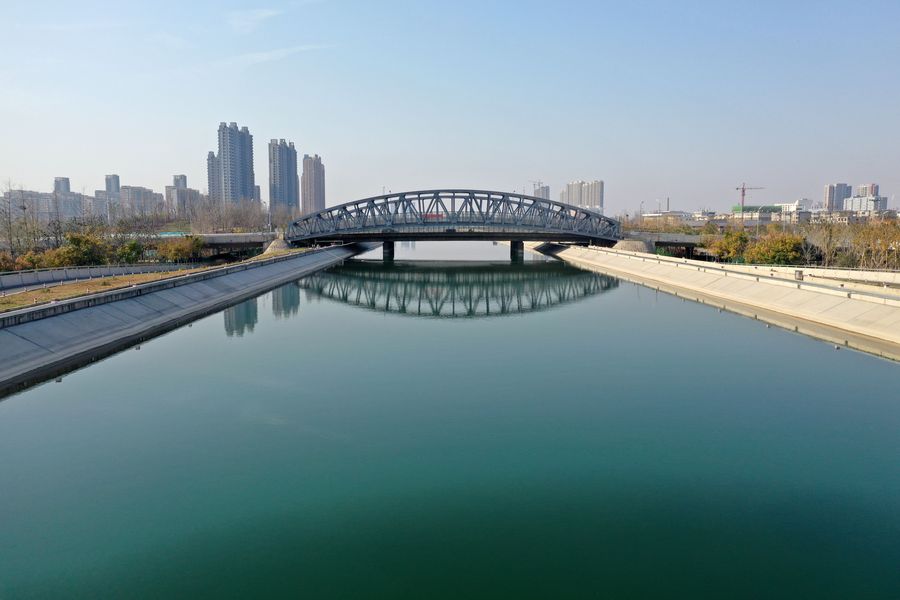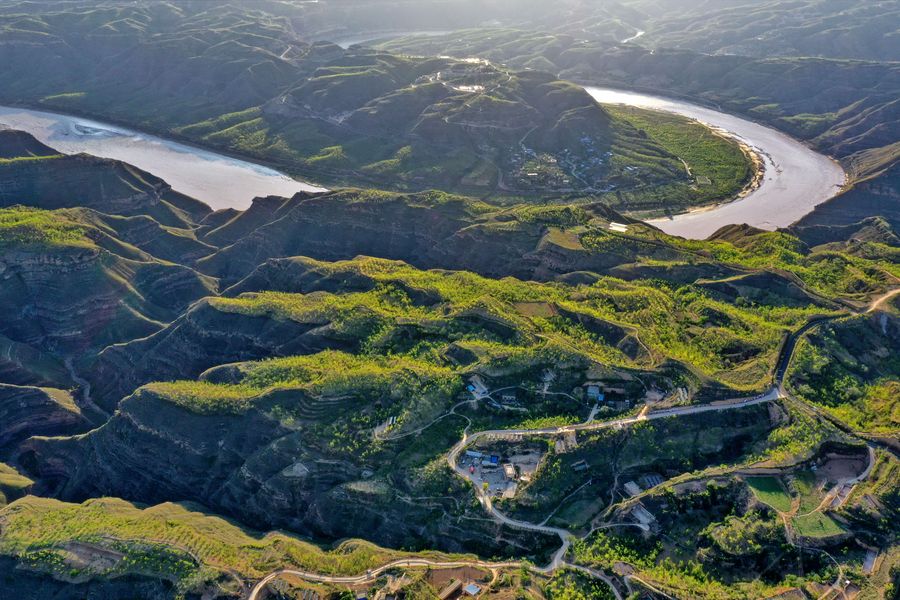
Aerial photo taken on Dec. 5, 2019 shows the view of a canal of China's south-to-north water diversion project in Jiaozuo, central China's Henan province. [Photo/Xinhua]
When the water started to gush north through the middle route of China's mega water diversion project in 2014, Chinese President Xi Jinping hailed it as an important strategic infrastructure to optimize water resources, boost sustainable economic and social development, and improve people's livelihoods.
Five years on, the project, designed to take water from China's longest river, the Yangtze, to feed the arid north including Beijing, Tianjin, Hebei Province and Henan Province, has proved to be a reliable "lifeline" for water supplies in the recipient regions.
So far, the middle and eastern routes have delivered nearly 30 billion cubic meters of water to the north, benefiting over 120 million people, according to information released Thursday at a press conference of the Ministry of Water Resources.
In the capital city of Beijing, more than 70 percent of its drinking water in the major urban areas came through canals and pipelines from the south, benefiting over 12 million residents, over half of the city's total population.
The project, with its western route still in the pre-construction stage, has highlighted China's intensive efforts to deal with its water stress.
The country has around 20 percent of the world's population, but only 6 percent of its freshwater resources. Its per capita water availability is just one-fourth of the world average.
Considering China's economy is still powering ahead at a relatively fast rate, water demand is set to rise, making water scarcity a chronic issue.
A bigger problem is uneven distribution. Most of the water shortages are in the parched north where industries and agriculture concentrate.
The international definition of water scarcity is 1,000 cubic meters of usable water per person per year. Beijing, even after receiving supply from the south, has only less than one-sixth of that amount.

Aerial photo taken on Aug. 28, 2019 shows the scenery along the Yellow River in Yonghe county, north China's Shanxi province. [Photo/Xinhua]
Over the years, apart from the construction of large projects to balance water supplies, China's top leadership has stepped up efforts to protect the resources.
"Lucid waters and lush mountains are invaluable assets." Since Xi took office as Chinese president, he has repeatedly called for concerted efforts to promote ecological protection.
In September, Xi demanded better use of water resources in the Yellow River, with rational planning of the population, urban and industrial development to resolutely curb unreasonable water demand.
The Yellow River, known as China's "Mother River" and the cradle of Chinese civilization, feeds about 12 percent of China's population, irrigates about 15 percent of arable land, supports 14 percent of national GDP, and supplies water to more than 60 cities.
"The protection of the Yellow River is critical to the great rejuvenation and sustainable development of the Chinese nation," said Xi, adding that it is a major national strategy.
Across the nation, China's top leadership has rolled out "river chief" and "lake chief" systems to assign each waterway in the country a specific steward to prevent pollution, which have produced remarkable effects.
While China has moved forward on the right path, the country has to continue to wrestle with the supply-demand mismatch of water as the population grows and urbanizes, analysts said, calling for further efforts to better utilize water resources.
For the next steps, the government should ensure the safe operation of the water diversion project, while quickening the building of a society with a growing awareness of water-saving habits, said Ni Guangheng, a water resource professor at Tsinghua University.